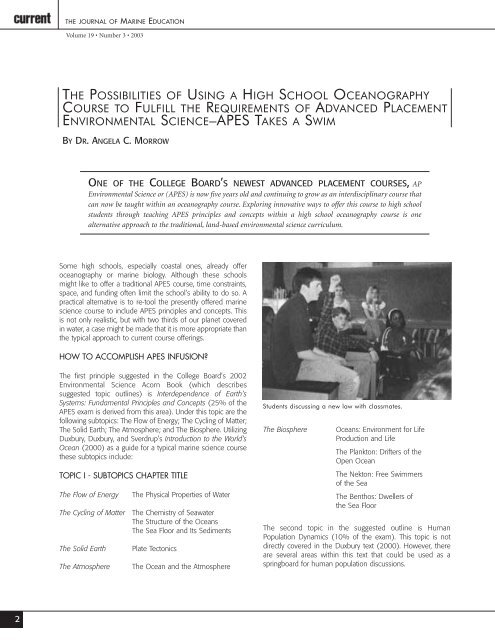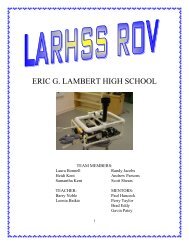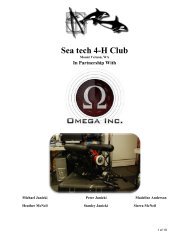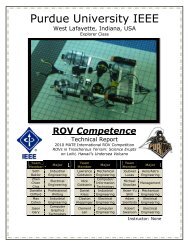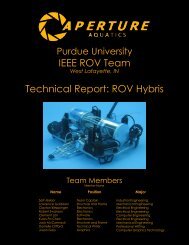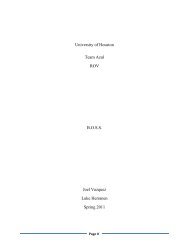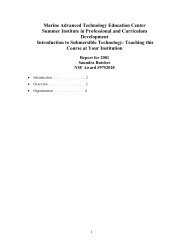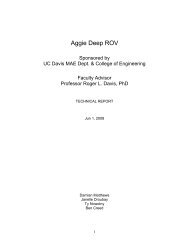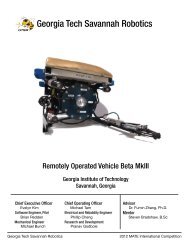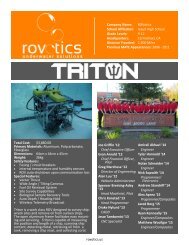Volume 19 • Number 3 • 2003 - the Marine Advanced Technology ...
Volume 19 • Number 3 • 2003 - the Marine Advanced Technology ...
Volume 19 • Number 3 • 2003 - the Marine Advanced Technology ...
Create successful ePaper yourself
Turn your PDF publications into a flip-book with our unique Google optimized e-Paper software.
THE JOURNAL OF MARINE EDUCATION<br />
<strong>Volume</strong> <strong>19</strong> <strong>•</strong> <strong>Number</strong> 3 <strong>•</strong> <strong>2003</strong><br />
THE POSSIBILITIES OF USING A HIGH SCHOOL OCEANOGRAPHY<br />
COURSE TO FULFILL THE REQUIREMENTS OF ADVANCED PLACEMENT<br />
ENVIRONMENTAL SCIENCE–APES TAKES A SWIM<br />
BY DR. ANGELA C. MORROW<br />
ONE OF THE COLLEGE BOARD’S NEWEST ADVANCED PLACEMENT COURSES, AP<br />
Environmental Science or (APES) is now five years old and continuing to grow as an interdisciplinary course that<br />
can now be taught within an oceanography course. Exploring innovative ways to offer this course to high school<br />
students through teaching APES principles and concepts within a high school oceanography course is one<br />
alternative approach to <strong>the</strong> traditional, land-based environmental science curriculum.<br />
Some high schools, especially coastal ones, already offer<br />
oceanography or marine biology. Although <strong>the</strong>se schools<br />
might like to offer a traditional APES course, time constraints,<br />
space, and funding often limit <strong>the</strong> school’s ability to do so. A<br />
practical alternative is to re-tool <strong>the</strong> presently offered marine<br />
science course to include APES principles and concepts. This<br />
is not only realistic, but with two thirds of our planet covered<br />
in water, a case might be made that it is more appropriate than<br />
<strong>the</strong> typical approach to current course offerings.<br />
HOW TO ACCOMPLISH APES INFUSION?<br />
The first principle suggested in <strong>the</strong> College Board’s 2002<br />
Environmental Science Acorn Book (which describes<br />
suggested topic outlines) is Interdependence of Earth’s<br />
Systems: Fundamental Principles and Concepts (25% of <strong>the</strong><br />
APES exam is derived from this area). Under this topic are <strong>the</strong><br />
following subtopics: The Flow of Energy; The Cycling of Matter;<br />
The Solid Earth; The Atmosphere; and The Biosphere. Utilizing<br />
Duxbury, Duxbury, and Sverdrup’s Introduction to <strong>the</strong> World’s<br />
Ocean (2000) as a guide for a typical marine science course<br />
<strong>the</strong>se subtopics include:<br />
TOPIC I - SUBTOPICS CHAPTER TITLE<br />
The Flow of Energy<br />
The Cycling of Matter<br />
The Solid Earth<br />
The Atmosphere<br />
The Physical Properties of Water<br />
The Chemistry of Seawater<br />
The Structure of <strong>the</strong> Oceans<br />
The Sea Floor and Its Sediments<br />
Plate Tectonics<br />
The Ocean and <strong>the</strong> Atmosphere<br />
Students discussing a new law with classmates.<br />
The Biosphere<br />
Oceans: Environment for Life<br />
Production and Life<br />
The Plankton: Drifters of <strong>the</strong><br />
Open Ocean<br />
The Nekton: Free Swimmers<br />
of <strong>the</strong> Sea<br />
The Benthos: Dwellers of<br />
<strong>the</strong> Sea Floor<br />
The second topic in <strong>the</strong> suggested outline is Human<br />
Population Dynamics (10% of <strong>the</strong> exam). This topic is not<br />
directly covered in <strong>the</strong> Duxbury text (2000). However, <strong>the</strong>re<br />
are several areas within this text that could be used as a<br />
springboard for human population discussions.<br />
2


